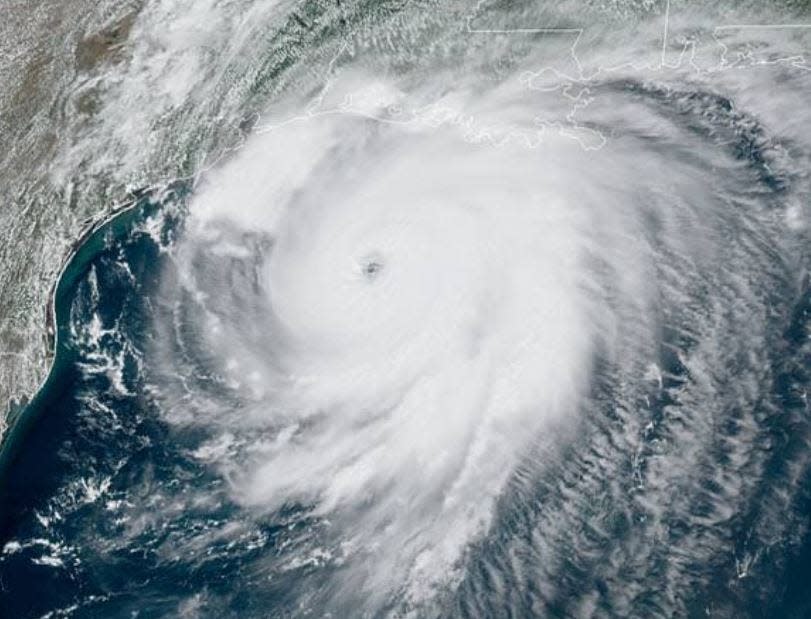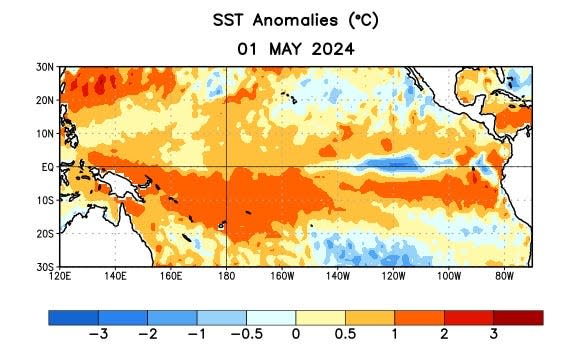2024 hurricane season outlook worsens for North Carolina: La Nin?a is on its way
AccuWeather predicted an "explosive" hurricane season that would affect the coast of North Carolina. Now, the National Oceanic and Atmospheric Administration says that La Nin?a, a major factor in this activity, is on its way.
Reporting from USA TODAY said that forecasters from the NOAA gave up to an 85% chance that the climate pattern will form by fall. NOAA meteorologist Nat Johnson told USA TODAY that the organization was "very confident" that La Ni?a will form by fall. When it does form, La Ni?a will last through next winter and impact United States weather through the coldest months.
More immediately, NOAA has stated that there is up to a 69% chance that La Ni?a will develop by the summer months, July-September, meaning that La Ni?a could worsen the Atlantic hurricane season.
La Ni?a was present during the 2020, 2021 and 2022 Atlantic hurricane seasons, all of which featured near or above the historical average of 14 named storms. The 2020 season is tied with the 2005 season for the highest number of named storms, 30.
More: AccuWeather predicts 'explosive' 2024 hurricane season; North Carolina coast at risk
What months are in hurricane season 2024?

The so-called "explosive" storm season, beginning June 1 and extending through November, received the following predictions from AccuWeather:
20-25 named storms
8-12 hurricanes
4-7 major hurricanes
4-6 direct U.S. impacts
Heightened risk for Texas, Florida Panhandle, South Florida and the Carolinas.
Potential to break all-time record of 30 named storms in one season.
More: Tornado Alley may be expanding; Here's why Southern states are at risk
What is La Ni?a?

The NOAA explains that El Ni?o and La Ni?a are opposing climate patterns that break normal conditions of water and weather in the Pacific ocean. The patterns have global impacts on weather, wildfires, ecosystems and economies.
La Ni?a: La Ni?a, meaning "Little Girl" in Spanish, brings stronger trade winds to the Pacific, pushing more warm water toward Asia. Off the west coast of the Americas, upwelling increases, bringing cold, nutrient-rich water to the surface.
Cold waters in the Pacific push the jet stream northward, tending to lead to drought in the Southern U.S. and heavy rains and flooding in the Pacific Northwest and Canada. La Ni?a can also result in a more severe hurricane season, which is what experts are concerned about in 2024.
El Ni?o: During El Ni?o, meaning "Little Boy" in Spanish, conditions are reversed. Trade winds weaken and warm water is pushed back east, toward the Wwest coast of the Americas.
El Ni?o can also affect weather significantly. Warmer waters cause the Pacific jet stream to move south, causing the northern U.S. and Canada to become dryer and warmer than usual. In the Gulf Coast and Southeast, these periods are wetter than usual and have increased flooding.
More: Cicadas 2024: Will a cold snap delay the emergence of cicadas? When will they emerge?
How often is La Ni?a?
Generally, El Ni?o and La Ni?a last nine to 12 months, though they can last for years on end. The events occur every two to seven years on average, but there is no regular schedule. El Ni?o typically appears more often than La Ni?a.
More: Explore Worldwide names Great Smoky Mountains as 2024’s top trending park; Here's why
Doyle Rice, USA TODAY, contributed to this report.
Iris Seaton is the trending news reporter for the Asheville Citizen Times, part of the USA TODAY Network. Reach her at [email protected].
This article originally appeared on Asheville Citizen Times: Hurricane season 2024: What is La Nin?a?
